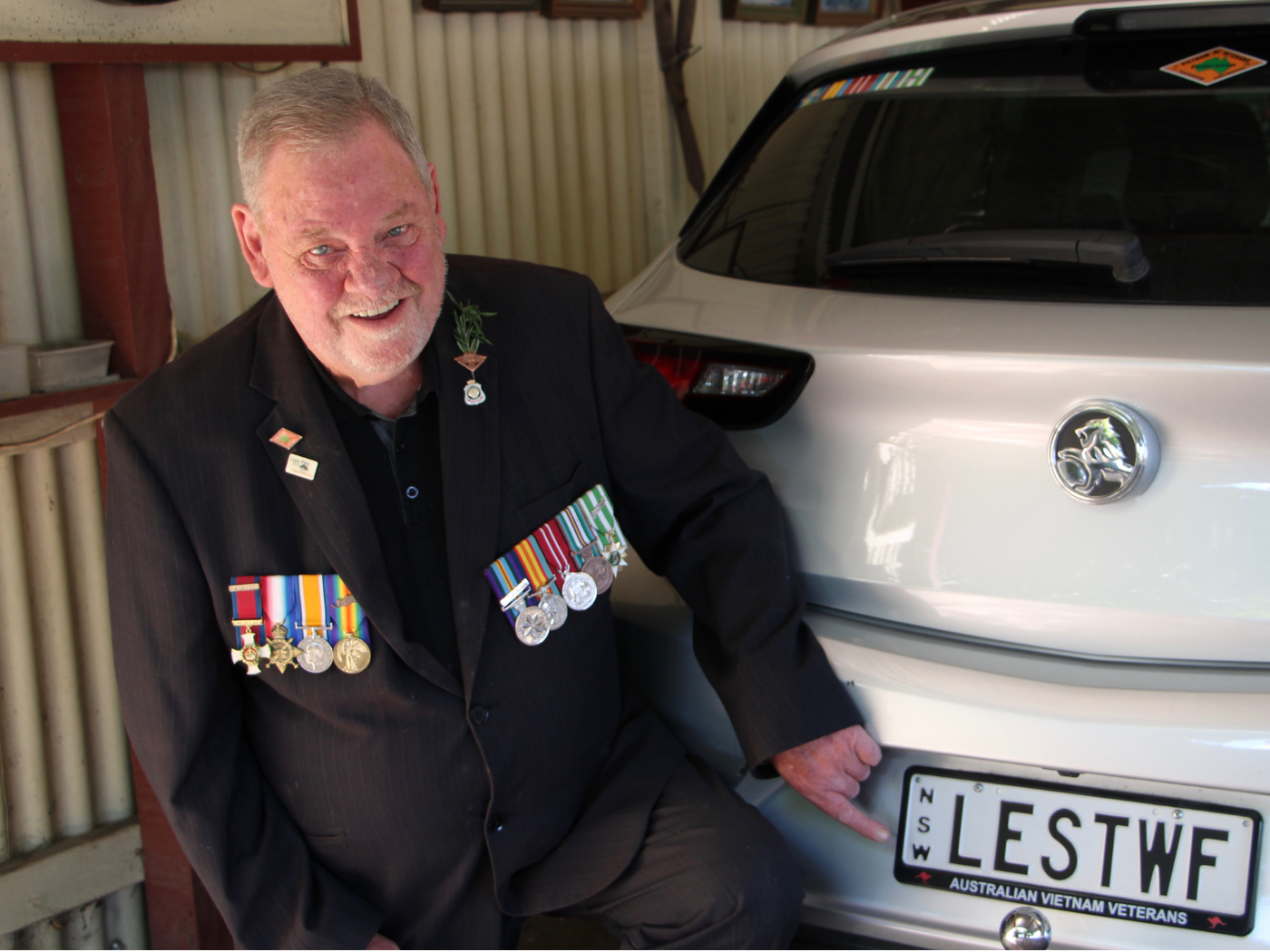PRESS RELEASE: Bureaucracy fails to recognise our returned war heroes and keep ‘The Spirit of Anzac’ alive.

Leading up to Anzac Day is an opportune time to make the public aware of the contents of this release. The author of the book How to Research and Honour our Returned War Heroes, Ian D. Burrett JP, is a Vietnam veteran. A summary of the book appears on the book website www.howtoresearchwarheroes.com which is the only place where the book can be purchased. The RRP of is $39.99. Ian would be happy to post you a copy of the book at no charge if requested. He can be contacted on (02) 6355 5546, 0428- 363-385 or by email on [email protected].
Book Review by Dr Brendan Nelson AO, former Director of the Australian War Memorial (2012-2019) “One person with conviction and vision can change the world. Ian Burrett is one such man. imbued with the qualities of his decorated father who served and fought in World War One, Ian’s determination to find and recognise all those men and women who have served on our nation’s memorials is the stuff of legend”.
MEDIA RELEASE
For immediate release: Thursday 6 April 2023
Bureaucracy has been derelict in not doing all it can to give our RETURNED war heroes the recognition they earned and deserve as well as keeping ‘The Spirit of Anzac’ alive.
Because of years of war causing debilitating physical and emotional problems, many returned veterans, and their families probably suffered more than those who died during or shortly after the wars. As such, the author of the book How to Research and Honour our Returned War Heroes, Ian Burrett JP, firmly believes that our returned heroes have just as much right to be named on community war memorials along with those who died. Because 98.4% of the nearly 103,000 people named on the Roll of Honour at the Australian War Memorial (AWM) are those who died in the two world wars the book, whilst covering other conflicts, mainly concentrates on those who served in the world wars.
Hundreds of thousands of our returned war heroes have been neglected by not being named on community war memorials. Why? The major reason is that neither the Department of Veterans’ Affairs (DVA), the AWM, RSL Australia, the Australian Local Government Association (ALGA) or the National Archives of Australia (NAA) have published any guidelines to assist communities with this task. Their publications assist people to research individuals; not communities desirous of locating many local heroes. Requests to them to correct this wrong have fallen upon deaf ears. Without a set of guidelines many communities have put the task of updating their war memorials into the ‘too hard basket’.
Late in 2015 Ian commenced a project to update Lithgow and district WWI memorials with the names of both those who died and returned. The Lithgow City RSL sub-Branch did not initially support the project. In the absence of any guidelines they incorrectly relied upon the criteria of the Office of Australian War Graves which only relates to those who died. Because the sub-Branch did not support the project the Lithgow City Council also declined to support it.
Ian spent over 1500 hours producing over 500 pages of research. His research was a steep learning curve with many obstacles to be overcome. A countless number of letters, emails and phone calls to all tiers of government and relevant institutions was required. After seeing the completed research, the sub-Branch and Council finally came on side. The end result was that on 11 November 1918 a plaque was unveiled in the memorial area in Queen Elizabeth Park, Lithgow. It named a further 762 Lithgow township people who had served in WWI. Amongst these were 72 people who had died and were not named on the original Lithgow WWI Cenotaph which named 131 people who had died.
The book outlines what Ian learnt during his research. It gives step-by-step guidelines and handy hints as to how to navigate the various websites created by the DVA, AWM and the NAA. As such, it is the first and only text book to assist communities to update their war memorials. Ian is hopeful that ‘the powers that be’ will use his book as a guide to produce a website that improves upon what he has written. The book also covers many thought provoking comments and suggestions, some of which are summarised below.
The Ode.
First published in the London Times in September 1914 The Ode is the fourth stanza in the poem ‘For the Fallen’ written by Laurence Binyon for British soldiers who had died in WWI. Adopted by many countries to honour those that died in all conflicts it is read or played at commemorative services. Returned heroes are neglected. Ian suggests that those responsible should seriously consider adding the following lines, or something similar, to The Ode:
‘And to those who returned and served and have since passed away We also honour their service today.’
The Ode is also recited at funeral services for returned service people. The first two lines of The Ode read:
‘They shall grow not old, as we who are left grow old, Age shall not weary them, nor the years condemn.’
These words are not appropriate as, in many cases, those being farewelled had grown old and age had probably wearied them.
The RSL Movement Negligent.
The RSL is the main Ex-Service Organisation that conducts public commemorative services on Anzac and Remembrance Days. Whilst it is providing an ever improving wellbeing service to veterans still alive and those currently serving, and their families, it has just as much responsibility to serve the millions of descendants of those who died during their service with the Australian Defence Forces or have since passed away as well as the general public.
An Affiliate Member of the RSL is generally a person who is a relative of a person (living or deceased) who is or was eligible to be a Service or Life Member of the League, or a person who is deemed by a sub-Branch committee to have provided significant service to the sub-Branch and supports the objects of the RSL. Apart from Victoria the RSL movement falls way short in attempting to attract Affiliate Members. In most states and territories Affiliate Members are not permitted to be elected president or vice-president of a sub-Branch or to represent the sub-Branch at national, state and territory conferences. Because of death and ill health, the number of veterans marching and participating in commemorative services, and holding sub-Branch committee positions, is rapidly decreasing. In a majority of cases recent veterans join a sub-Branch to obtain welfare benefits and show little interest in the commemorative side of the sub-Branch. An increasing number of smaller RSL sub-Branches are folding. This situation could be reversed if more effort was made to attract Affiliate Members and to let them take a greater involvement in RSL management. As it is the RSL and many sub-Branches act more like unit associations.
The RSL could do a lot more to encourage descendants to wear their ancestors’ medals, or replicas of these medals, and to join veterans at commemorative services and marches. When veterans march do they do so to say ‘Hey – look at me’ or to remember all those who have served. The father of the President of RSL NSW, Ray James, served on the Kokoda Track in World War Two. Ray does not wear his father’s medals at commemorative services. Many politicians speaking at commemorative services do not wear their ancestors’ medals.
Suicide.
The Royal Commission into Defence and Veteran Suicide is nearing completion. If it can be proven that a person’s suicide was war related the AWM will add that person’s name onto their Roll of Honour.
Nick Fletcher at the AWM informed Ian that at least 50,000 – maybe 60,000 or more – of those that served in WWI died within ten years of their return. Most were aged in their 20s and 30s. At the time of their return it was definitely the case that the man was the breadwinner and that a woman’s place was in the home. How would the men have felt knowing that their physical and mental problems prevented them from fulfilling their manly duty. Many committed suicide. A similar situation would have occurred in respect to WWII. On the AWM Roll of Honour at the AWM only 89 in respect of WWI and 266 in respect to WWII have been named because of proven war related suicide. Getting names on community war memorials will include many who committed otherwise unidentified war related suicide.
###
77 year old Ian D. Burrett JP is the treasurer of the Portland (NSW) RSL sub-Branch. His NSW car number plates read LESTWF. His mother was born on 11 th November 1915 when his then 21 year old father, 568 Lt Col Athol Frederick Burrett DSO MID (pictured left on book cover) was fighting at Gallipoli. Athol was one of less than 300 of the 12,000 Australians who landed at Gallipoli on 25 th and 26 th April 1915, to be still fighting when the war ended. At the Lone Pine Centenary Service at Gallipoli on 6 th August 2015, Ian, after laying the last wreath blew a replica of the whistle his father blew, almost exactly 100 years previously, to lead the Lone Pine charge which concluded the ABC TV coverage of the event.
Media Contact.
Media Release written by author. Submitted on behalf of author by DO’KREATIVE. Media Contact: Dannielle O’Keefe on 0412 089 160 or email at [email protected].



